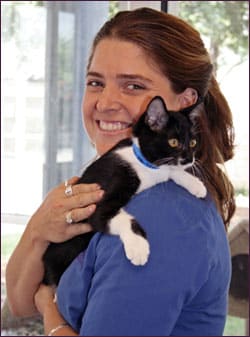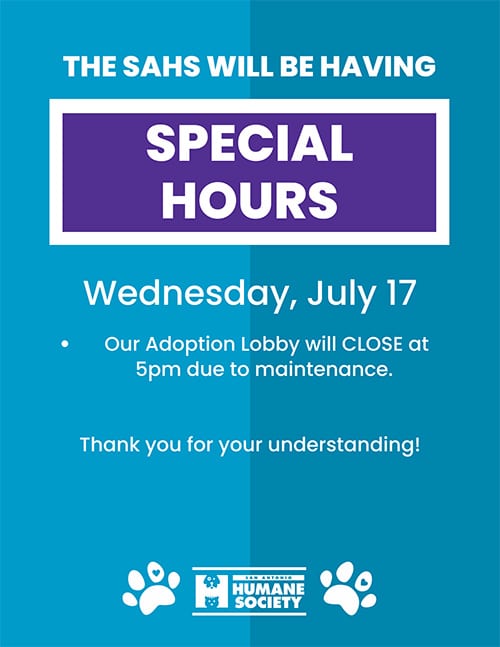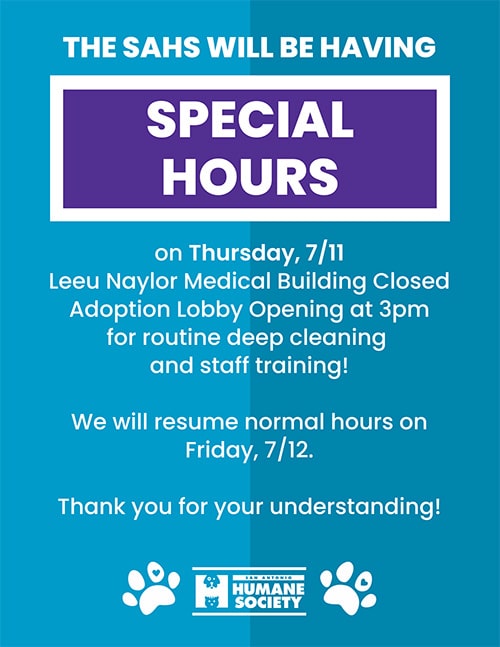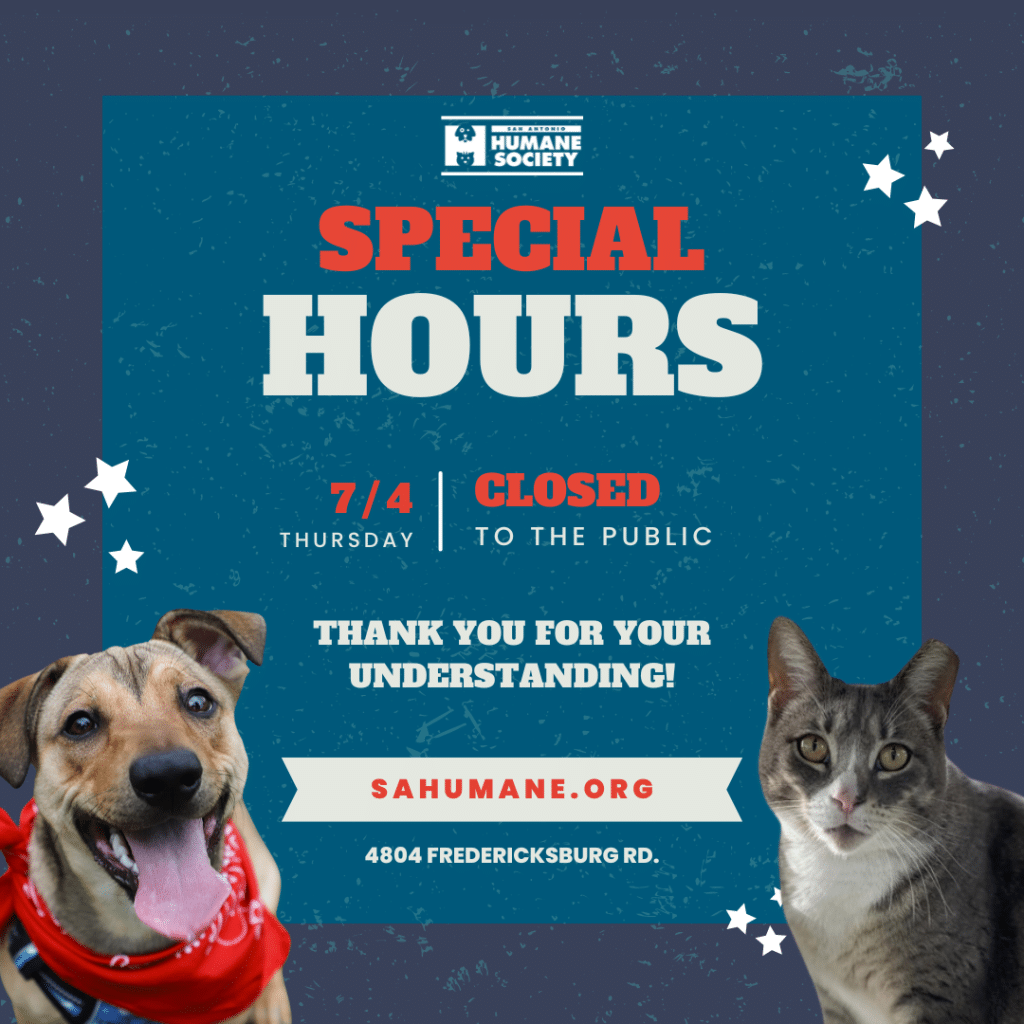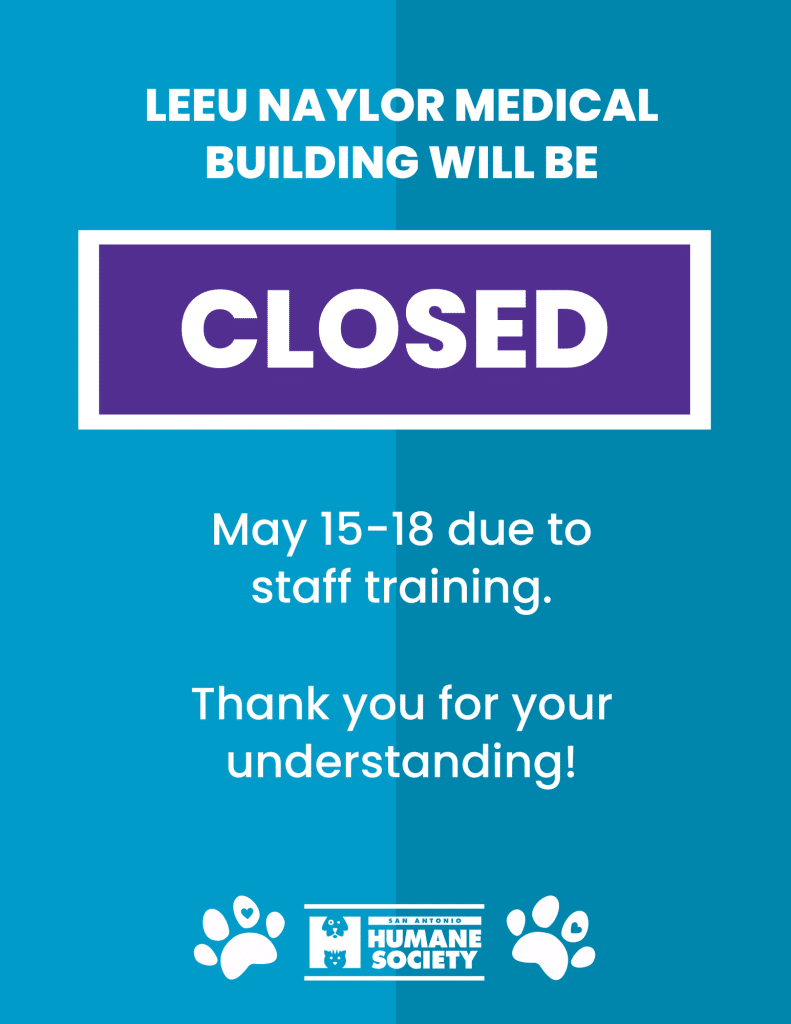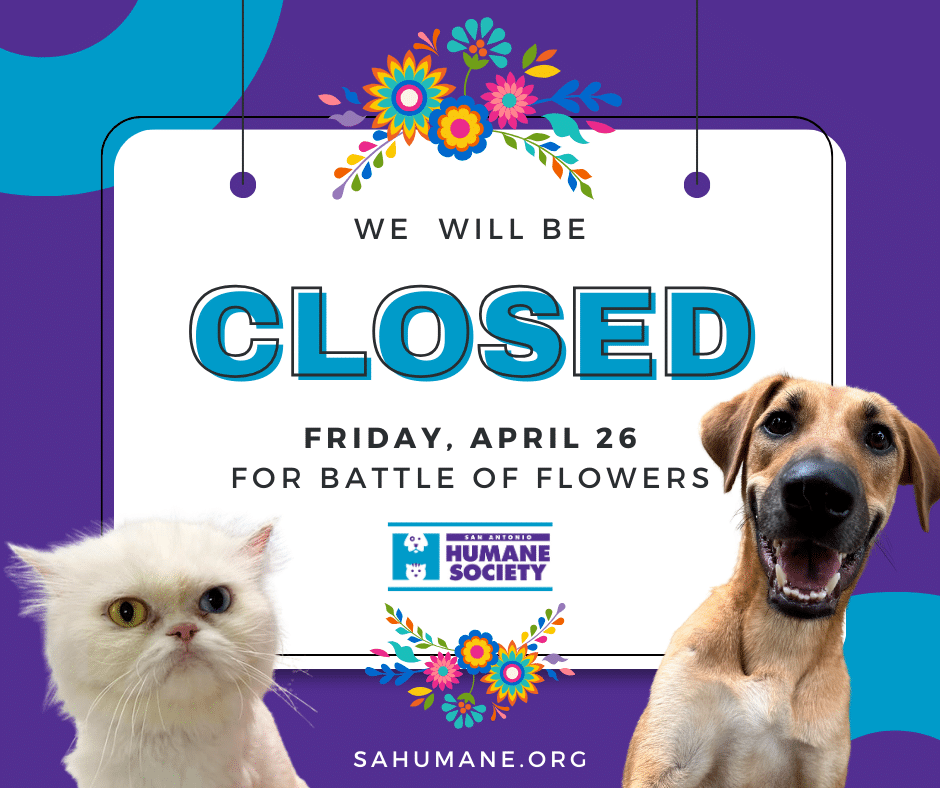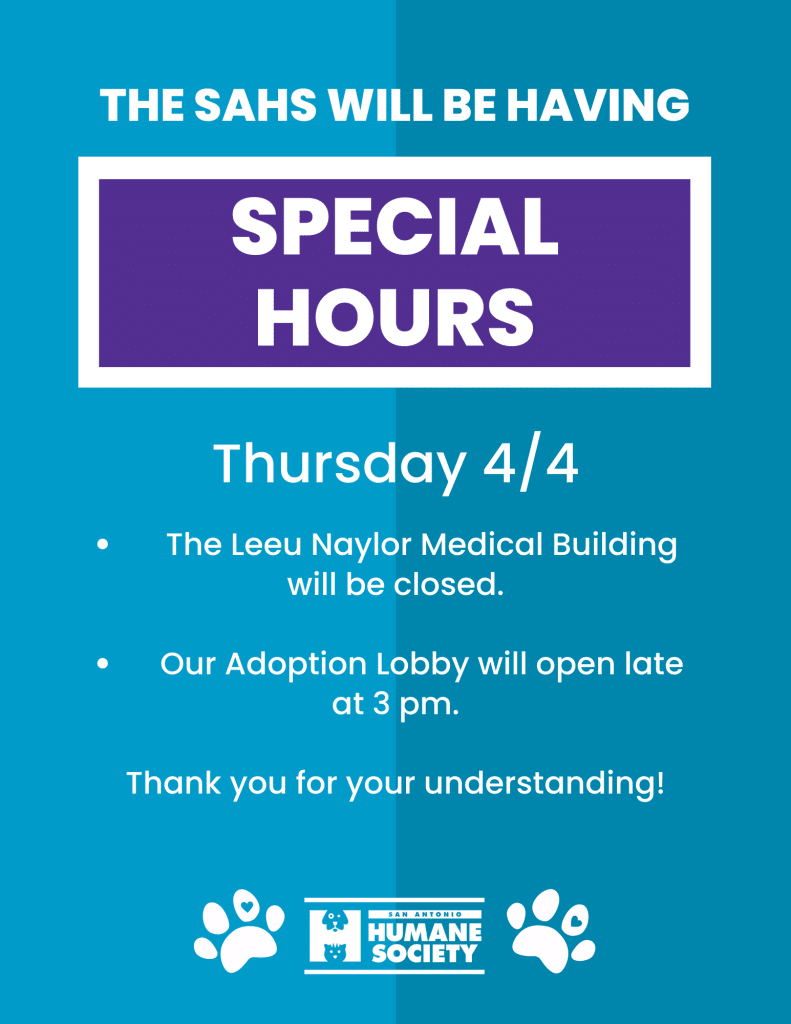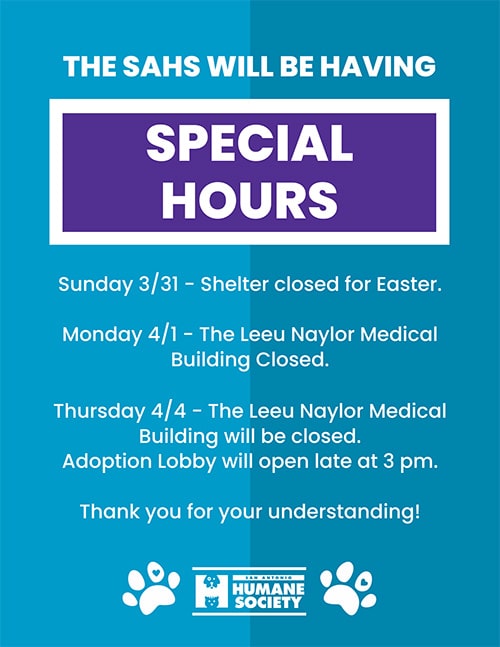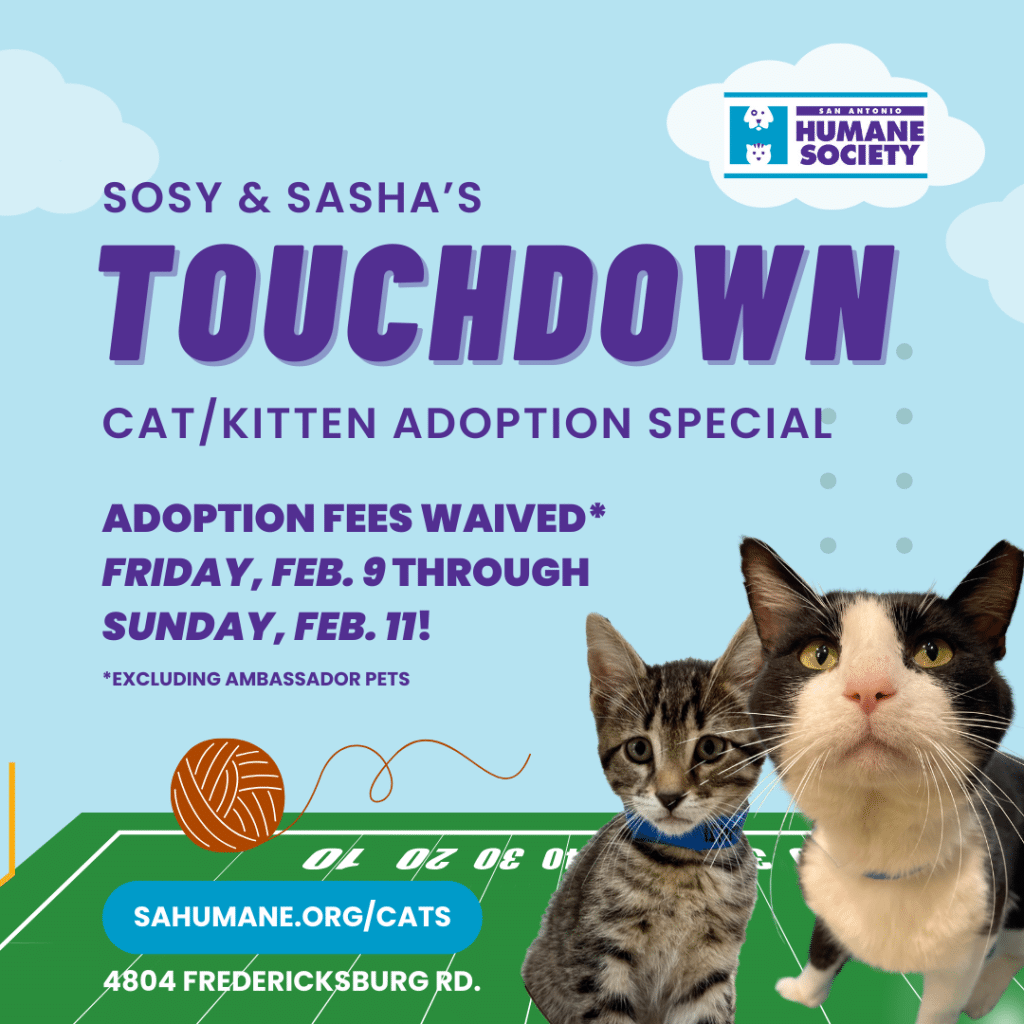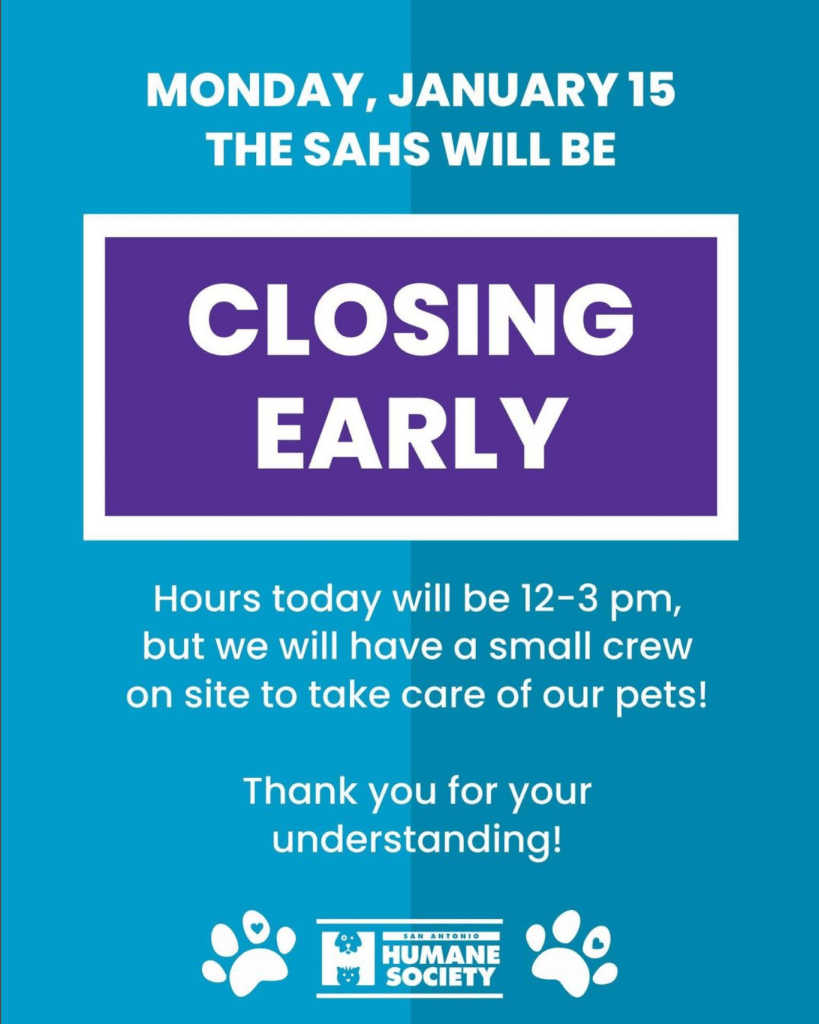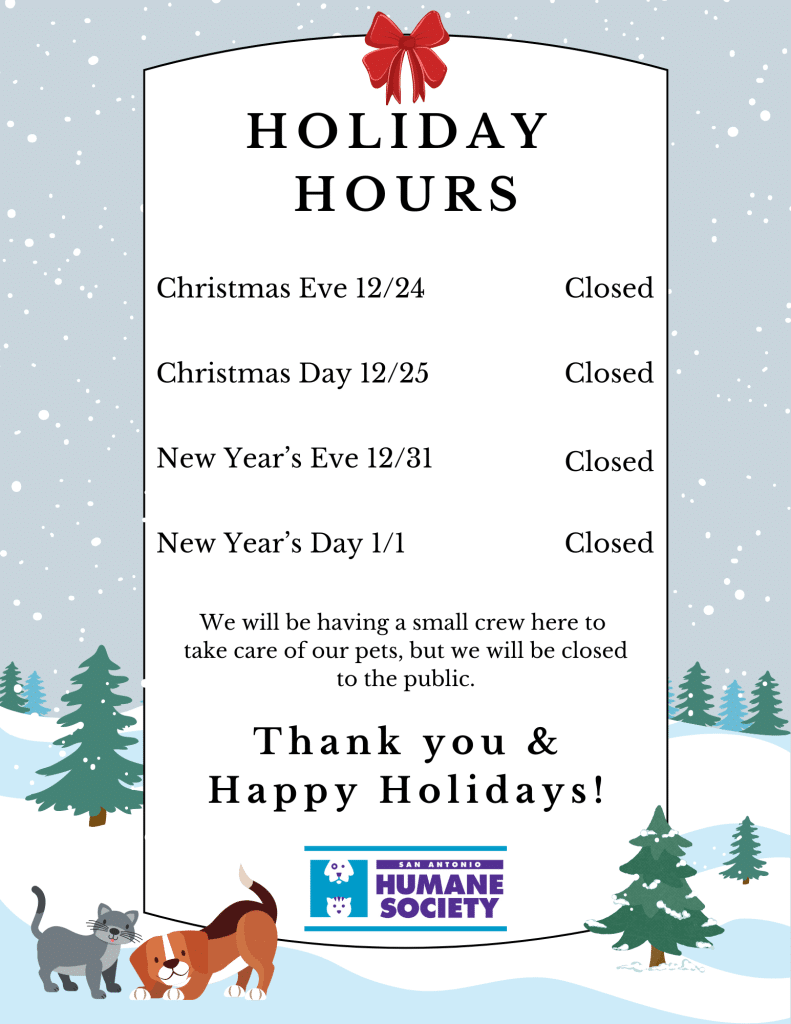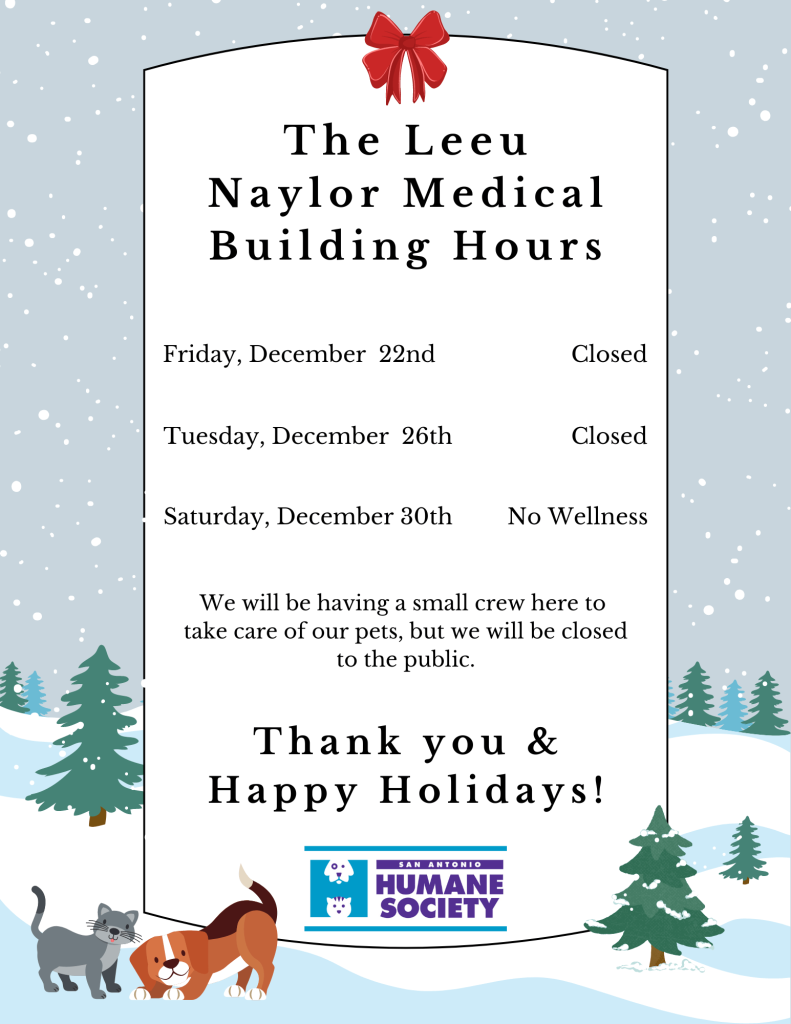Rabies
Many people recognize the name of the fatal disease that can infect most mammals, including humans. Rabies has been successfully eradicated in many areas of the world, but in some places, like Texas, it is still endemic in the animal population including our domestic pets. The Texas Parks and Wildlife Dept are dropping vaccines to be ingested by wildlife in the more sparsely populated areas of our state, but what about right here in our own backyard? Here are some commonly asked questions and a lot of useful information about rabies from Dr. Courtney H. Bridgeman:
1. I live in the city of San Antonio, I don’t have to worry about rabies right? Doesn’t rabies only happen out in the country? While it is true that more wildlife lives away from the city limits, many cases of rabies appear right in the middle of the city. Wildlife like bats and raccoons wonder throughout the city without much fear, more so when infected with rabies. Several cases of rabies in domestic livestock, including a small tame kitten 2 years ago, have been documented in San Antonio proper.
2. What types of animals can be exposed and infected? My horse is safe right? Wrong! Horses, cattle, pigs, dogs, cats, and most other domestic pets can be infected. Small rodents, like hamsters, guinea pigs, and rabbits, and birds have only been shown to contract rabies in a laboratory setting and never in a real world scenario. The most prevalent animals in Bexar county with Rabies in ’09 were Skunks and Bats. The moral of this story is: your pets need vaccination to be safe and do not come in contact with sick/injured wildlife that are acting oddly.
3. This rabies stuff is kinda scary. What are the symptoms of rabies I should be watching for? In wildlife: any unusual behavior – animal who is usually out during the night who is out during the day and acting unafraid of people, bats who are usually flying away from people now lingering on the ground unable to fly. In pets look for the following behavior:
a. Sudden behavior change – either to aggressiveness, timidity, or dumbness
b. Lethargy, not eating, or trouble swallowing (especially water!)
c. Neurotic behavior – as though the animal were seeing hallucinations
d. Excess saliva production
4. When is the animal dangerous to people and what should I do? An animal that is affected by rabies will contain the virus in its saliva or other bodily excretions within the last 10days of its life. This is the stage that the animal begins to show the affects of the disease listed above. Any contact with saliva even if not a bite could be infective at this stage. If you suspect that a wild animal or a pet animal has symptoms of rabies: Do not touch it! Enclose the animal in a secure location, if possible, and immediately call the authorities (Animal Care Services or your local Sheriff).
5. What are the laws in the state of Texas regarding rabies and my pets? In the state of Texas it is required by law that all cats, dogs (including wolf hybrids), livestock (especially those in constant contact with humans) and pet ferrets should be vaccinated for rabies by an appropriate age. For dogs and cats this is between 12-16wks old! Your veterinarian will provide you with a vaccination certificate that is the only legal proof that your animal has been vaccinated! Rabies tags don’t count, so don’t lose the certificate. Each animal will need to be boostered again according to the vaccine which can be a year to 3 years. Ask your veterinarian. In the event of exposure to rabies, a current rabies vaccination history will be a lot less trouble, money, and heartache! No vaccine could mean 90days of isolation with no human contact for your treasured pet and a large housing fee for you. Euthanasia is also still a possibility when the money can’t be found for a 90day isolation.
6. What happens if I am bitten by a rabid animal? The current treatment for a human that has been exposed (even without biting) to an animal that is positive for rabies includes a series of injections of immune-globulin around the wound as well as a series of 4 rabies vaccinations. It can cost as much as $2-3 thousand dollars and a lot of fear and worry!
7. How does the San Antonio Humane Society help to prevent the spread of this horrible virus? Each animal who is leaving our shelter by adoption over the age of 12wks is given its first rabies vaccine at the time of surgery. All animals who come in to have surgery at the shelter are required to carry proof of a current rabies vaccination or must be vaccinated at the time of surgery. And lastly, the San Antonio Humane Society offers Wellness Clinics on most Saturdays of every month!

